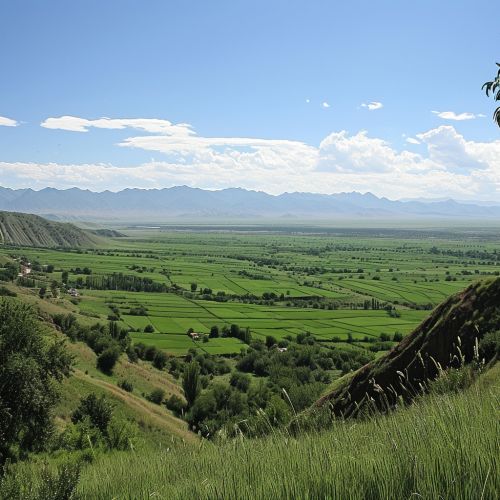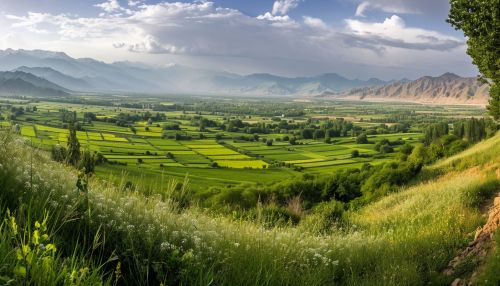Fergana Valley
Geography
The Fergana Valley, located in Central Asia, is a fertile region that stretches across eastern Uzbekistan, southern Kyrgyzstan, and northern Tajikistan. It is surrounded by the Tian Shan mountain range to the north and the Gissar Range to the south. The valley is approximately 300 kilometers long and 70 kilometers wide, making it one of the largest enclosed valleys in the world. The valley is irrigated by the Syr Darya river, which flows from the Tian Shan mountains and is one of the longest rivers in Central Asia.


History
The Fergana Valley has a rich history that dates back to the Bronze Age. It was an important region for the Achaemenid Empire, and later became a key part of the Silk Road trade route. The valley was conquered by Alexander the Great in the 4th century BC, and it was here that he founded the city of Alexandria Eschate. The valley was later ruled by various Turkic, Mongol, and Persian empires before becoming part of the Russian Empire in the 19th century.
Economy
The economy of the Fergana Valley is primarily based on agriculture, with cotton, silk, and various fruits being the main products. The region is also known for its oil and natural gas reserves, which contribute significantly to the economies of the three countries it spans. In addition to these resources, the valley is home to numerous industries, including textiles, food processing, and chemical production.
Culture
The Fergana Valley is a cultural melting pot, with a diverse mix of ethnic groups including Uzbeks, Tajiks, and Kyrgyz. The region is known for its rich traditions in music, dance, and the visual arts, particularly the production of Ikat textiles. The valley is also famous for its traditional Central Asian cuisine, which includes dishes such as plov, manti, and shashlik.
Environmental Issues
Despite its natural beauty and agricultural abundance, the Fergana Valley faces several environmental challenges. These include water scarcity, soil degradation, and pollution from industrial activities. The overuse of water for irrigation, particularly for cotton cultivation, has led to a decrease in water levels in the Syr Darya river, affecting both the environment and the livelihoods of the local population.
